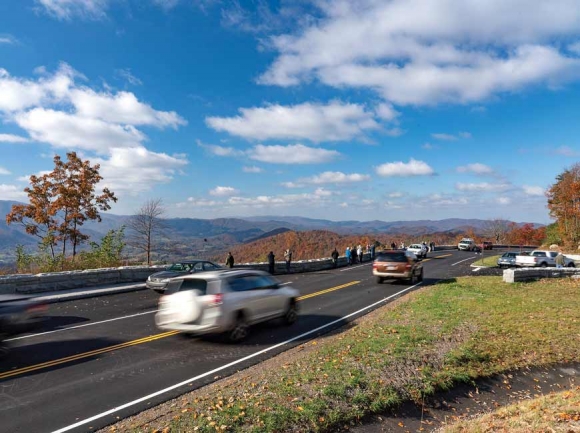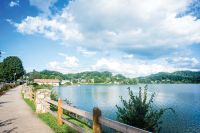Time to face reality regarding the Smokies

The Great Smoky Mountains National Park — for all its grandeur — is facing serious challenges, and it’s going to take those who cherish it the most to protect this acclaimed natural and cultural resource for future generations. If that means instituting entrance fees, then we’ll support taking the necessary steps to make that happen.
A story by SMN Outdoors Writer Holly Kays in the Dec. 11 edition revealed that a long-standing belief among many in this region is simply not true — the GSMNP isn’t barred from charging entrance fees and there is no wording in the enabling legislation that created the park in 1934 that says as much. (www.smokymountainnews.com/news/item/28111). This claim has attained urban legend status, but it simply isn’t accurate. And with a deferred maintenance backlog approaching $237 million, perhaps it’s time to seriously consider what a nominal entrance fee could mean to the park and its users.
First the history, which most in this region know all too well. When the park was established, land was bought from residents who had already lived there for generations. Schools, graveyards, homesteads and more were transferred to the federal government and residents told to move out. There was animosity from many who at the time did not see the need to preserve and protect wilderness, who did not understand how creating a park would eventually help pull this region out of the Great Depression and be an important cog in turning the Smokies into one of the country’s most visited tourist areas.
One agreement the federal government did make was to provide access to cemeteries, but most interpret this as providing physical access to those who need it. And there’s no reason why families visiting cemeteries could not be immune to any fee.
When Tennessee transferred Little River Road and Newfound Gap Road to the federal government in 1951, its state legislature said “no toll or license fee shall ever by imposed by the United States” for the use of said roads. Before an entrance fee could be enacted, most agree that it would take action from the Tennessee legislature to re-word or simply revoke this legislation.
When North Carolina turned over its portion of Newfound Gap Road, it referenced a 1936 letter from the then — National Park Service Director Arno Cammerer that said it was not the Park Service’s intent to charge a fee. A GSMNP spokesperson said if fees ever came under serious consideration, the Park Service would seek some kind of approval of the concept from North Carolina officials.
Related Items
A separate federal law, passed in 1992, makes it illegal to charge entrance fees on roads other than Newfound Gap and Little River Road — like into Cataloochee or Cades Cove — unless “fees are charged for entrance into the park on main highways and thoroughfares.”
Taken together, the actions taken by Tennessee, North Carolina and the federal government certainly discourage any attempt at developing plans for an entrance fee. But to be clear, they don’t prohibit such fees.
One could make the argument, though, that none of those early advocates of the park could have foreseen the pressures the it is facing today. First among these is the lack of federal funding. As mentioned earlier, this park has $237 million in deferred maintenance needs, but its budget allocation in 2018 was $19.4 million from the feds and $2.5 million in fees from camping permits and such. Catching up, at that rate, is simply impossible. Add to that it attracts 11 million visitors a year — more than twice as many as any other park unit — and its perilous position comes into sharper focus. Visitor services, resource protection and other needs are simply being ignored due to lack of funding.
By comparison, Grand Canyon had a budget of $21.6 million from the feds and $8.4 million in fees while notching 6.4 million visitors in 2018. Nearly every other national park in the country charges entrance fees. We are the outlier. In fact, the per-visitor funding for GSMNP is $1.92, compared to $5.94 per visitor at the Grand Canyon National Park, which is the second-most visited park in the country.
Look, no one wants to charge a fee that makes it cost-prohibitive for locals and others to continue to visit. But even a minimal charge could mean tens of millions of dollars each year. And much has changed since those early days when North Carolina and Tennessee discouraged enacting entrance fees. We no longer have a rural farm economy where many survived almost entirely on what they grew, hunted, built and crafted and had little cash. In those days people depended on easy and free access to the park.
Change is the only constant in this world. Protecting and preserving this special place won’t just happen, it’s going to take hard work and planning and a smart allocation of limited resources. Every other large national park has an advantage on the Smokies because they take in millions of dollars we don’t. I think the day has come for the Smokies to seriously consider implementing some type of entrance fee, and the surrounding communities should help build public support for it. If not, the crown jewel of Western North Carolina may one day soon be tarnished beyond recognition.
(Scott McLeod can be reached at This email address is being protected from spambots. You need JavaScript enabled to view it.)









